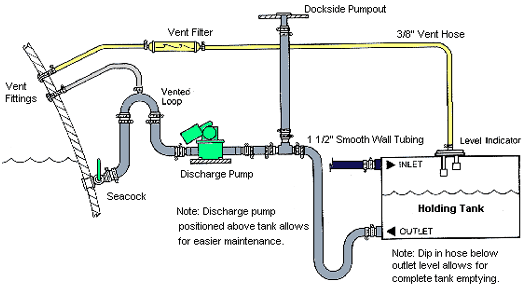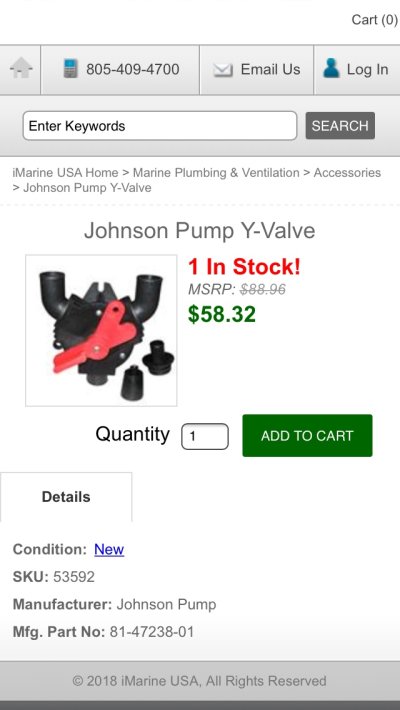SeaMoose
Senior Member
- Joined
- Oct 7, 2007
- Messages
- 360
- Vessel Name
- Sea Moose
- Vessel Make
- 1976 34' D/C Taiwanese Trawler
Hello and Thanks for Reading
My electric toilet has a 1" discharge out of the built in macerator, looking for a Y valve to direct the output between overboard discharge and holding tank.
When I had a manual head with 1 1/2" line the valve leaked within a year of install. So I am overthinking this purchase.
I can find 2 makers of 1" Y valves, Forespar MF-Series or Bosworth. I like the Bosworth as it's available in flush mount, but don't like that it has smooth connections .vs. barbs. If they didn't use some crazy thread on the fitting this is fixable.
Any experience with either of these brands? The previous valve was a Whale. Forespar is a familiar name to me, Bosworth is not.
My electric toilet has a 1" discharge out of the built in macerator, looking for a Y valve to direct the output between overboard discharge and holding tank.
When I had a manual head with 1 1/2" line the valve leaked within a year of install. So I am overthinking this purchase.
I can find 2 makers of 1" Y valves, Forespar MF-Series or Bosworth. I like the Bosworth as it's available in flush mount, but don't like that it has smooth connections .vs. barbs. If they didn't use some crazy thread on the fitting this is fixable.
Any experience with either of these brands? The previous valve was a Whale. Forespar is a familiar name to me, Bosworth is not.


